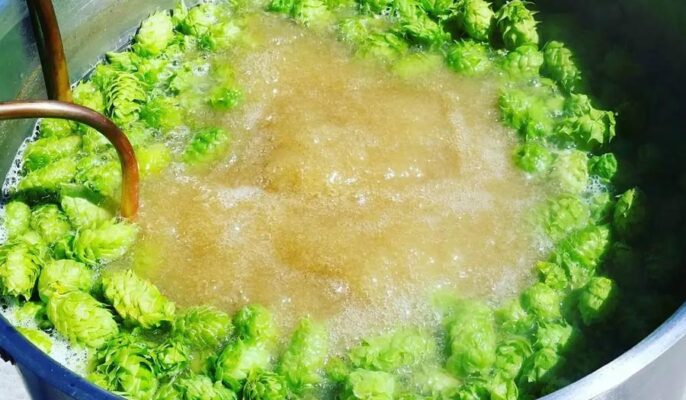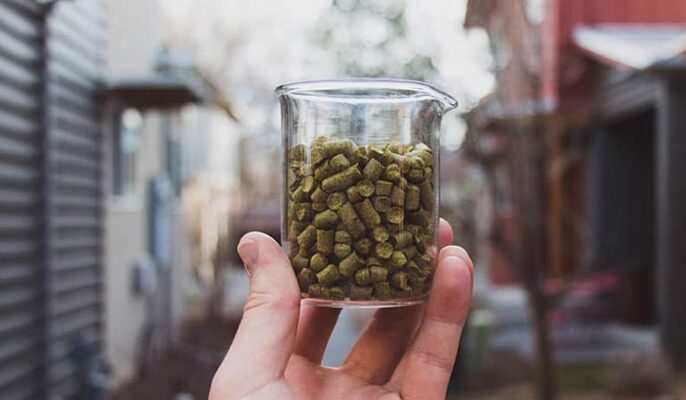Adding hops to the fermenter bypasses boiling and fermentace so that the volatile oils that give beer its wonderful hop aroma are not evaporated by heat or vented by off-gassing during fermentation. There are many ways to use hops to add bitterness, flavor, and aroma. Brewers use hop racks to maximize hop aroma and capture volatile compounds in hops that might be removed when added early in the brewing process.
What kind of hop stand?
Hop laying refers to adding hops after boiling and soaking them in the wort for a long time as it starts to cool. A common time to add these hops is during the swirl. Hop holders may also be called “swirl hops”.
The aim is to capture the more subtle aromas of the hop varieties you’re using, not drive them away with prolonged exposure in the boiled wort. The enough of hops added in the hop rack is for hop-forward beers, where the hop aroma is designed to shine and dominate.

Characteristics of the hop stand
Swirl hops have the best properties of adding hops and dry hops at the instant of a boil, as the hot wort (below boiling temperature) allows the contribution of essential oils that would not be released at dry hop temperatures, while also minimizing the evaporation of these oils that occurs at boiling temperatures. This process imparts some bitterness to the beer, as the alpha acids are isomerized at temperatures above 175 °F (79 °C). The rate of isomerization will be lower than with a boil at or above 212 °F (100 °C) and is generally considered to add a smoother bitterness than earlier boiling.
Hop oil
Discussions about hop oil tend to focus on the following: total oil, B-pinene, myrcene, linalool, caryophyllene, farnesene, humulene, and geraniol. The main hydrocarbons in hop oil are terpenoids (such as myrcene, humulene, caryophyllene, etc.), which have been identified as one of the main contributors to hop aroma in beer.
Add aroma extract
An easy way to make an aromatic extract is to boil a small amount of wort and then steep some hops in it after turning off the heat. The hop oil extract can then be cooled and added to beer. The wort sugars added to the beer are consumed by the yeast. If you are adding aroma extract while preparing for bottle or keg brewing, boil equal parts malt extract with your base sugar and double the hop oil extract as the base.
Compared to dry hopping
There is no loss of beer using this method compared to dry hopping. You gain a small amount of volume. If you plan to do this ahead of time, you should take this into account so you can compensate for any dilution. Plus, this method won’t turn your beer cloudy compared to dry hopping.
How many hops to add
The amount of hops required to achieve the same intensity of aroma is less than the amount of hops added in a swirl. Generally, the amount used is a little less than that of dry hops. (Keep in mind that dry-hopped hops have different characteristics, so you can combine this technique with dry-hopped hops if you wish.)

What makes a hop rack different from adding hops later?
One might think that a hop rack is no different than adding a lot of hops when you turn off the heat at the end of the boil. The similarity is that both methods produce a strong hop aroma.
Hop holders are more subtle. Consider the temperature of the wort before adding hops. Reducing the temperature from boil to around 75-80°C before adding the hops will make a difference not only in the aroma but also in the bitterness extracted from the hops.
At lower temperatures, the hop use will be lower, which means less alpha acid for the Tesco. you’re extracting more aroma and less bitterness from the hops at a lower temperature.
Závěrem
Dry hopping and adding aroma extracts to fermented beer are two ways to enhance hop aroma. They have different characteristics, so they can be combined to create a beer with a very strong hop aroma if desired.




